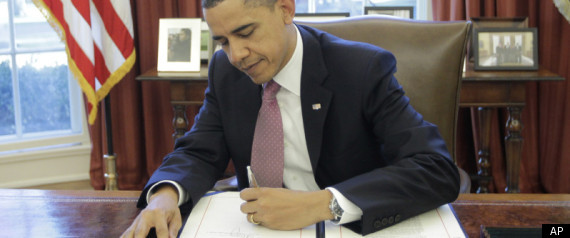![[COVER_Jump]](http://si.wsj.net/public/resources/images/WK-AZ574_COVER__G_20111019140529.jpg) The Building Process as Practice by Paul Discoe with Alexandra Quinn/Gibbs Smith$70.4 Million:
The Building Process as Practice by Paul Discoe with Alexandra Quinn/Gibbs Smith$70.4 Million: The county’s assessed value of Mr. Ellison’s Woodside, Calif. property, modeled on a Japanese emperor’s 16th-century residence.
One of the nation’s most voracious consumers of trophy real estate is back on the hunt.
Since the mid-1990s, software billionaire Larry Ellison has accumulated hundreds of millions of dollars worth of top-shelf properties around the world. The portfolio of Oracle Corp.’s co-founder includes five adjacent lots in Malibu, Calif.; a Newport, R.I., mansion formerly owned by the Astor family; a historic garden property in Kyoto and an estate in Rancho Mirage, Calif., with a private, 19-hole golf course.
Juliet Chung on Lunch Break looks at how software billionaire Larry Ellison, perhaps the nation’s most avid trophy-home buyer, has taken serial property buying to new extremes. His latest target: Lake Tahoe.
The list of serial buyers of trophy properties, while thinning in recent years, includes Paul Allen along with Roman Abramovich and other Russian oligarchs. Mr. Ellison has a distinctive buying pattern: When he finds an area he likes, he takes a flood-the-zone approach. He often buys several adjacent properties to combine into a single sprawling compound. At the same time, he acquires other noncontiguous properties nearby, increasing his overall holdings in a desirable area.
Mr. Ellison has been applying this approach to a new location: Lake Tahoe, the resort area straddling the California-Nevada border. Records show Mr. Ellison has spent $102 million in the last several years buying property, both on and off the market, to assemble three different parcels fronting the 191-square-mile lake. On one of them, purchased over three years for a total of $58 million, Mr. Ellison is constructing a compound with more than 18,000 square feet of living space as well as a pond with an island, waterfalls and a tennis court with a pavilion, according to plans submitted to Washoe County, Nev.
Photo Illustration by Ryan Etter; Zuma Press (Ellison); Getty Images (Kyoto)
Mr. Ellison declined to comment. An examination of public records and interviews shows that the billionaire sportsman acquires properties in the same determined way he goes about his other business, whether it’s his hostile acquisition of rival PeopleSoft in 2005 or his successful bid to win the America’s Cup sailing competition last year, an effort on which he reportedly spent $100 million.
The third-richest American, with a net worth of $33 billion, according to Forbes, he was close to fellow tech-company founder Steve Jobs. Mr. Ellison spoke at Mr. Jobs’s memorial service. He has two grown children, Megan and David, both in the movie business, and is recently divorced from his most recent wife, romance novelist Melanie Craft.
Real-estate observers say Mr. Ellison is known for getting what he wants, pursuing properties he’s interested in regardless of whether or not they are on the market. “Larry’s philosophy has always been, ‘Buy the best, without compromise,’ ” says Kurt Rappaport, co-founder of the Westside Estate Agency, who represented Mr. Ellison in several of the Malibu deals. Mr. Rappaport declines to address specific deals but says that Mr. Ellison views prime real estate as a scarce commodity that can’t easily be replicated.
Kenny Blum for The Wall Street Journal$15 Million: The cost to assemble this 2.1 acre parcel with a sandy beach near Snug Harbor, Lake Tahoe.
Mr. Ellison sometimes sends an associate to scout out a property before he visits, according to people who have been involved in his real-estate transactions. Mr. Ellison can be quick to act, sometimes making a decision after a single walk-through. “He was very much, ‘I want it, here’s the check, OK, move,’ ” says Christine Mitchell, whose husband sold Mr. Ellison a 1.6-acre lot on the eastern shore of Lake Tahoe for $11.7 million in 2006.
Mr. Ellison’s other holdings include two properties in Woodside, Calif., a wealthy Silicon Valley community. One, a 23-acre estate modeled on a 16th-century Japanese emperor’s residence, was designed and built over nine years and completed in 2004, according to San Mateo County. In 2011, the county assessed it at $70.4 million. The other was purchased for $23 million in 2005 and is now for sale, asking $19 million.
Kenny Blum for The Wall Street Journal$58 MIllion: The cost to assemble this Incline Village, Lake Tahoe property. Plans for the compound being built call for more than 18,000 square feet of living space.
In Malibu, according to records and city officials, Mr. Ellison owns a hotel and two restaurants, the five adjacent lots on Carbon Beach that cost a reported $65 million and at least two other homes. In Rancho Mirage, near Palm Springs, Calif., he bought a 249-acre estate earlier this year for $49 million.
In Kyoto, Japan, he owns a garden property with a home, pavilion and gardens fed by the freshwater Lake Biwa, according to a person familiar with the deal. With an asking price of about $86 million, it was purchased in the last several years after a representative of Mr. Ellison’s learned of the property while attending an art auction.
In San Francisco’s tony Pacific Heights neighborhood, he owns a five-bedroom, four-level home, purchased in 1998 for $3.8 million. Last June, Mr. Ellison sued his neighbors alleging that trees on their property were obstructing his views of San Francisco Bay and harming his property values; the suit was settled out of court in May.
Photolibrary$10.5 Million: In January 2010 Mr. Ellison bought this Newport, R.I. mansion previously owned by the Astor family.
In Newport, Mr. Ellison owns an Italianate-style mansion previously owned by the Astor family and purchased in January 2010 for $10.5 million. Mr. Ellison said earlier this year in a deposition related to his San Francisco tree lawsuit that he had bought a Newport mansion sight-unseen and planned to turn it into a museum.
Lake Tahoe, with its pristine waters and world-class skiing, has long been a seductive draw for Bay Area residents. Incline Village, the town on the Nevada side of the lake where Mr. Ellison has made a number of his buys, bears the nickname “Income Village” for its wealthy residents and its reputation as a tax haven (Nevada has no personal income tax). For years Michael Milken, the philanthropist and former junk-bond king, put on an annual fireworks display on July Fourth from a barge near his Incline Village home. Now local residents and businesses donate to pay for a show, says Jim Smith of Red, White & Tahoe Blue, the local nonprofit that puts on the festivities.
At Tahoe, Mr. Ellison struck in 2006, according to public records and individuals familiar with some of the deals. Through his limited-liability company Tahoe Estates, he bought parcels along three different areas of the lake that year. He spent $14 million on 2.2 acres in Incline Village, $12 million on 5.7 acres near the gated community of Glenbrook on the east shore of the lake and $11.7 million on 1.6 acres near Snug Harbor, a few miles south.
Mr. Ellison created three noncontiguous lakefront parcels in eight separate deals, sometimes without sellers realizing he had bought adjacent property. He assembled the Glenbrook-adjacent property, a forested, 12.6-acre parcel with a pebbly beach and several cabins built by previous owners, in three separate deals in 2006, 2007 and 2009 for $29 million. He put together the Snug Harbor property—a 2.1-acre parcel which has a sandy beach and, at the time of purchase, a 10,000-square-foot home, a beach house, a guest house and other buildings—in 2006 and 2009 for a total of $15 million. Plans show he wanted to remodel one of the houses and install a heated driveway.
Carl A. Eklund, Trustee of BLX Group$49 Million: In Rancho Mirage, Calif., Mr. Ellison bought this 249-acre estate. It includes a 19-hole golf course.
Mark Sweetland, 55, who was one of several inheritors of 4.1 acres near Glenbrook, says there were no immediate plans to sell until Mr. Ellison’s offer came in. “I think Mr. Ellison just decided he was going to own the thing so he made a significantly higher offer than we’d had before, and he ended up owning the property,” says Mr. Sweetland, a beneficiary of the trust that sold the land in 2007 for $12 million. He says he wasn’t aware Mr. Ellison was buying up adjacent property, but says the price was fair regardless.
It’s Mr. Ellison’s 7.6-acre property on the north shore of the lake, in affluent Incline Village, where owners include PeopleSoft founder David Duffield, that has generated the most interest.
There, on a wide, leafy street, where gated entrances and security cameras abound, Mr. Ellison is building a rustic-style lakefront compound on property he bought in three separate deals. Real-estate developer and rancher Les Busick, who used to live on one of the properties where Mr. Ellison is now building, says he went out on the lake in his boat to watch his old house being torn down. “I watched the whole thing,” Mr. Busick says. “I got a tear in my eye.”
The property has about 420 feet of lake frontage, according to public records, as well as two private piers and a private beach. Plans filed with Washoe County show more than eight separate structures totaling more than 18,000 square feet, including a main house with a pool and spa overlooking the lake, a beach house, a cottage and a writer’s cabin. A building permit has been issued for a lakeside gazebo with a stone fireplace.
From the street, passersby can peek beyond a stone wall with log accents to log-sided buildings with stone chimneys. A “living roof,” a roof planted like a garden, was recently abloom with yellow flowers. In addition to the extensive use of granite and cedar on the exteriors of buildings, the plans also call for the use of rocks for landscaping and the planting of aspen and maple trees and currant, dogwood or other native shrubs.
According to the plans, the main house, three-bedroom beach house and “West House” are located on the side of the property closest to Lake Tahoe. The writer’s cottage and a clay tennis court and tennis pavilion—with a lounge, fireplace, fold-down bed and powder room—occupy the middle of the property. Closer to the street are another cottage and a caretaker’s cottage. A guard house is at the entrance.
Lori Eanes for the Wall Street Journal$3.8 Million: Mr. Ellison purchased this five-bedroom, four-level home in a tony section of San Francisco’s Pacific Heights neighborhood in 1998.
The compound is scheduled to be completed next fall, according to a construction schedule filed with the Tahoe Regional Planning Agency. Robb Olson, a principal at Olson-Olson Architects, the Tahoe City, Calif., firm that was named on the plans filed with the county, cited a confidentiality agreement and declined to comment on the project.
Mr. Ellison’s investments aside, Tahoe’s real-estate market has been struggling in recent years, with the median value for single-family homes in Incline Village down 31.8% since the peak of the market nationally in June 2006, according to real-estate firm Zillow.com. On the eastern end of the street, near where Mr. Ellison’s compound is located, Tom Gonzales, co-founder of software company Commerce One, is asking $49.9 million for a 4.35-acre lakefront property, down from its original 2007 asking price of $65 million.
Mr. Ellison has worked with some brokers, architects and builders repeatedly. He’s using the same contractor, Bruce Olson, on his Incline Village property that he used for renovations on his property near Snug Harbor. Malibu architecture firm Studio PCH drew up plans for a luxurious house for Mr. Ellison’s Carbon Beach lots but the application was withdrawn; according to Malibu’s planning department the firm designed and is overseeing the construction of his two restaurants there. Studio PCH declined to comment, citing a confidentiality agreement.
He’s worked with Christie’s International Real Estate repeatedly in the last several years, buying the Kyoto, Rancho Mirage and Newport properties through its affiliates. Christie’s spokeswoman Lisa Bessone declined to comment. He’s also worked with Mary Gullixson of Alain Pinel Realtors to sell property in the Bay Area.
Los Angeles brokers say Westside Estate Agency broker Mr. Rappaport, who has worked with Mr. Ellison in Malibu, has represented his daughter, Megan, a film producer whose credits include “True Grit” and who herself is known as a buyer of real estate in Los Angeles. Ms. Ellison has three homes in the Hollywood Hills and currently has in escrow a 10½-acre estate in Topanga, near Malibu, that she had listed for nearly $4 million with another agent, Scott Prather of Nourmand & Associates.
Despite his significant holdings—and sometimes-public legal wranglings—Mr. Ellison usually keeps a low profile when he’s around, say some locals who live in towns where he has bought. “One or the other of his yachts shows up here about four times a year, right off shore. Other than that, we don’t see him around town very much,” says Malibu Mayor John Sibert.
In Incline Village, locals say Mr. Ellison’s presence has been relatively free of controversy. Neighbors say his compound evokes the feel of old Tahoe and that Mr. Ellison has done a meticulous job of making sure the house fits into the surroundings. “It’s in keeping with the rustic atmosphere of the mountain community,” says Mr. Busick, who has since downsized to a condominium a few doors away from Mr. Ellison.
Some say projects such as Mr. Ellison’s help keep people employed in tough times and that his investment is a sign of confidence in the local real-estate market. Resident Chuck Weinberger says conversation among locals revolves around the scope or specific details of the project, such as the time flatbed truck after flatbed truck ferried to Mr. Ellison’s construction site boulders so large the trucks could accommodate only two or three at a time.
Mr. Weinberger says a live-and-let-live philosophy largely prevails. “His property is in a row of five or six very large, very impressive houses,” he says. “And it’s just another large, impressive house on the lake.”
—Jim Oberman contributed to this article.







![[COVER_Jump]](http://si.wsj.net/public/resources/images/WK-AZ574_COVER__G_20111019140529.jpg) The Building Process as Practice by Paul Discoe with Alexandra Quinn/Gibbs Smith$70.4 Million: The county’s assessed value of Mr. Ellison’s Woodside, Calif. property, modeled on a Japanese emperor’s 16th-century residence.
The Building Process as Practice by Paul Discoe with Alexandra Quinn/Gibbs Smith$70.4 Million: The county’s assessed value of Mr. Ellison’s Woodside, Calif. property, modeled on a Japanese emperor’s 16th-century residence.














